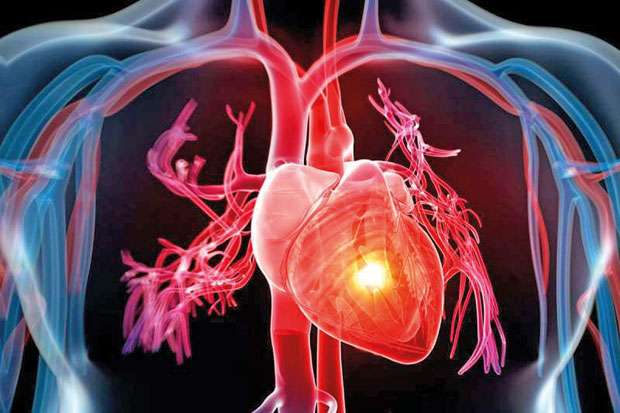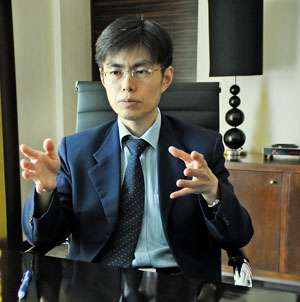06 Jul 2018 - {{hitsCtrl.values.hits}}

 Open heart surgeries have been the conventional method to treat aortic valve stenosis. Given that any heart surgery comes with a risk, the Trans-catheter Aortic Valve Implantation (TAVI) has been a preferred and effective method of treatment used in dealing with deadly heart diseases over the past few years. Dr. Chiam Toon Lim Paul, Cardiologist at Mount Elizabeth Hospital with a sub-specialization in interventional cardiology performed the first TAVI in 2009 and led the TAVI programme at the National Heart Center in Singapore. Dr. Paul also specializes in minimally invasive procedures in addition to Peripheral Artery Angioplasty and heart valve interventions.
Open heart surgeries have been the conventional method to treat aortic valve stenosis. Given that any heart surgery comes with a risk, the Trans-catheter Aortic Valve Implantation (TAVI) has been a preferred and effective method of treatment used in dealing with deadly heart diseases over the past few years. Dr. Chiam Toon Lim Paul, Cardiologist at Mount Elizabeth Hospital with a sub-specialization in interventional cardiology performed the first TAVI in 2009 and led the TAVI programme at the National Heart Center in Singapore. Dr. Paul also specializes in minimally invasive procedures in addition to Peripheral Artery Angioplasty and heart valve interventions.
During a recent visit to Sri Lanka, Health Capsule spoke to Dr. Paul about TAVI, its benefits and the contributing factors for people to develop heart diseases.
The biggest problem for heart disease is the heart artery blockage or coronary artery disease. In many of these patients with coronary artery disease, they may have suffered severe heart attacks
What is TAVI?
Dr. Paul said that Singapore is one of the more medically advanced nations in Asia, especially in the field of cardiology where development and improvement are extremely rapid. “So we are fortunate to have early access to new drugs and that’s what makes Singapore attractive for many patients to receive advance cardiac treatment. In recent years there are more devices and technologies which we could use to either repair the heart valve or completely replace it without the need for open-heart surgery. In the past, the only way to get to a heart valve, to repair or replace it, was through open-heart surgery. During the past 10 years we developed a few technologies to do some of these without following the open-heart procedure. This procedure called Trans-catheter Aortic Valve Intervention is where we replace the aortic valve through a small incision in the groin without the need for open heart surgery or without the need to stop the valve. We use a tissue valve that is prepared in the procedure room and it is folded down to put into a small tube which is the size of a pen. This is delivered through the hole in the groin to the heart and it replaces the heart valve. This is something that Singapore has been doing and I did it on a patient back in 2009 and we have been using it for the past few years,” said Dr. Paul.
Benefits of using TAVI
Unlike open-heart surgery, surgeons have identified several benefits in using this procedure as follows :
The chest need not be opened
The heart doesn’t need to be stopped when implanting the trans-catheter heart valve onto the beating heart
The native aortic valve is not removed and the newly implanted trans-catheter valve doesn’t need to be stitched in place
Several studies such as the PARTNER trial have shown that TAVI was better than aortic valve ballooning, which uses a balloon to widen the narrowed heart valve
For patients with moderate surgical risk, TAVI has also become a less invasive option
Speaking further Dr. Paul said that over the nine years the valves also haven’t remained the same. “We now use third generation valves and therefore the devices have become smaller and safer for the patients. Also the valve itself has been redesigned to improve the results of this procedure. Nowadays with the current generation valves, according to the current method in which we assess patients, the risk of replacing the heart valve is just 1-2%. The other area that Singapore is doing well is in the treatment of patients with heart failure. For many patients with heart failure there are not many options. If the heart failure is due to severe artery narrowing then we can help by doing angioplasty and adding stents to those arteries to open up the blood supply and hopefully the heart muscle recovers. Some of these patients may also need heart by-pass operations. Sometimes the damage is permanent. Even if you open the arteries the heart doesn’t recover and also there are smaller operations where the heart becomes weak due to muscle disease. This means there’s no artery blockage. With regard to these patients there are only two things we could do; one is to offer good medical treatment and in Singapore for the past four to five years we have had this new drug that has been shown to prolong survival in these kinds of conditions. The other intervention that is increasingly used for patients with severe heart failure is what we call Left Ventricular Assist device. In the old days these mechanical heart pumps were used on patients as a bridge to heart transplants. But now with improvements in technology some of these patients have had the pumps in them for many years.
Since it’s difficult to get hearts, heart transplants are very few in number. Therefore mechanical heart pumps can last for many years and become what we call a Destination Therapy. We have also observed that the quality of life is very much better with these heart pumps. This is something that isn’t found in most parts of Asia because it is heavily dependent on a good team that knows the technology and those who know how to run the devices and use the drugs,” the doctor said.
If the heart failure is due to severe artery narrowing then we can help by doing angioplasty and adding stents to those arteries to open up the blood supply and hopefully the heart muscle recovers. Some of tehse patients also may need heart by-pass operations. Sometimes the damage is permanent
Specific instances where TAVI is used
TAVI is mainly used for replacement of a diseased aortic valve. According to Dr. Paul there are four valves in the heart; two on the left where one of them is the aortic valve and the other mitral valve. “Problems in the aortic valve may be the most common problem that we see nowadays among the ageing population. So TAVI is mainly used for the aortic valve and for most patients the main problem with the aortic valve is severe aortic valve narrowing. So I would say that with the current valves we are able to do the TAVI for most of the patients with aortic valve disease.
Therefore we cover 85-90% of the patients. There may be 10% of patients who might not survive a TAVI either because the valve is too small for any valve to fit in or it is bigger in size. The size of the valve is 18-30mm and there may be patients outside this range. This is the main reason why we cannot do TAVI on patients.”
Contributing factors for heart diseases
“The biggest problem for heart disease is the heart artery blockage or coronary artery disease,” he added. “In many of these patients with coronary artery disease, they may have suffered severe heart attacks. If we reduce the problem of coronary heart disease then we reduce the burden of heart disease overall because it is the biggest component of all heart diseases combined. The risk factors include diabetes, smoking, cholesterol and high blood pressure. For Sri Lanka in particular and across the entire South Asian continent I think diabetes is probably the biggest contributor to heart disease because diabetes rates are quite high in this part of the world. If we can control it, we can reduce the burden of heart disease. The second reason is smoking and the third is probably cholesterol.
All these contributing factors always return to the lifestyle. If people get some exercise and a reasonable diet, they could reduce the risk of heart disease. There are studies which show that increased red meat consumption leads to heart disease. This maybe because red meat has a lot of saturated fat. If you want to take red meat you should avoid the more fatty portions and as a whole we should reduce red meat and consume lean meat such as chicken or fish to make up for the protein that you need,”Dr. Paul said.
Aftercare
It is important to take good care after heart surgery. Dr. Paul said that TAVI takes about one hour.
“The hospital stay is three nights and they can get back to their lifestyle in one or two weeks. Apart from the compulsory medications there’s nothing much they need to monitor. To control further artery blockages you need to control blood sugar etc. The valve itself is not a blood vessel. Once a valve is functioning well the patients can go back to their usual lifestyle if they don’t have diabetes and cholesterol,” he said.
Pic by Kushan Pathiraja
22 Dec 2024 3 hours ago
22 Dec 2024 4 hours ago
22 Dec 2024 6 hours ago
22 Dec 2024 6 hours ago
22 Dec 2024 7 hours ago